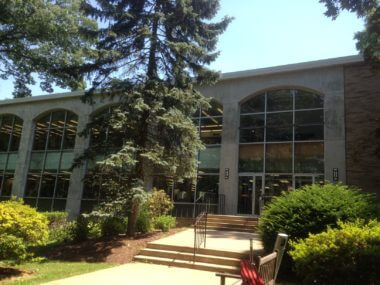 Cabrini University in Radnor, PA, is a Films On Demand subscriber. We recently talked with Adam Altman, electronic resources and systems librarian at Cabrini’s Holy Spirit Library, about how his library encourages usage among faculty and students, makes the most out of its budget, and more.
Cabrini University in Radnor, PA, is a Films On Demand subscriber. We recently talked with Adam Altman, electronic resources and systems librarian at Cabrini’s Holy Spirit Library, about how his library encourages usage among faculty and students, makes the most out of its budget, and more.
Tell us one way you’re helping users who may be hesitant to embrace technology to take advantage of your library’s online resources.
The library helps with online resources in many ways: through the librarian at the reference desk, information literacy class, interlibrary loan, or through personal assistance through a librarian. Students seem to gravitate toward me for technical assistance because of my title as Electronic Resources & Systems librarian, but I hope it’s also because they feel comfortable with me to guide them in the right direction. After all, I pride myself on how personable I can be when discussing technology.
What is your favorite part of being a librarian?
My favorite part about being a librarian has changed over the years but has always involved technology in some way. At the moment, I’m excited to spread the word about the technology that exists in a library setting, from the more and more elaborate integrated library systems (ILS), many of which are now cloud-based, to integrating mobile, videoconferencing, and possibly even virtual reality placed in a library learning commons setting. I am currently writing a dissertation about the technological perceptions of the library and its ongoing innovations.
What have you done that has most impacted usage at your college?
Usage increases for journals and databases when more patrons know about what we offer. By promoting particular underutilized databases, usually with the help of the vendors, usage for that information increases, sometimes dramatically. For example, four years ago, views of The New York Times was under 2,000. Promotion for our students and faculty to register for The New York Times has brought the views to more than 15,000 last year.
How do you alert faculty to the new resources your library acquires?
Through liaisons—each of the librarians are assigned to specific subject areas. I tend to use email and personal talk with faculty to discuss new resources at the library.
Tell us how you are making the most out of your library budget in these uncertain economic times.
Over the years, the cost of electronic resources has mostly increased, but I take this as a challenge to show that the library can save a lot of money by being resourceful and negotiating with vendors to bring down costs. I’ve been highly successful at lowering expenses but still maintaining or even increasing our electronic resources. At first, my methods were just about looking at expenses that have gone unchecked over the years; thus, the price of that resource has gone up dramatically (5% yearly increases). I put a stop to that. Then, I focused on certain vendors that I thought could offer better deals than they have offered previously and making tough choices about which databases to keep. Some of this involves doing research about what other institutions with close to our FTE are spending and looking at consortia deal possibilities. Next, we will be doing an RFP for our ILS, which contract ends at the end of 2020. This could lead to more savings with better resources for what we need.
It does not stop there, either. In fact, negotiating is only the beginning, because cost-effectiveness is contingent on ingenuity, innovation, and the integration of our resources, not only at the library but also around the entire Cabrini community.
What do you think is the library’s most important responsibility at your institution?
The information and services that the library offers should be at the forefront of higher education. Our responsibility is toward the entire Cabrini community, both on and off campus. Thus, the library should lead in its innovations and its progressive nature to embolden Cabrini and its community’s success.

